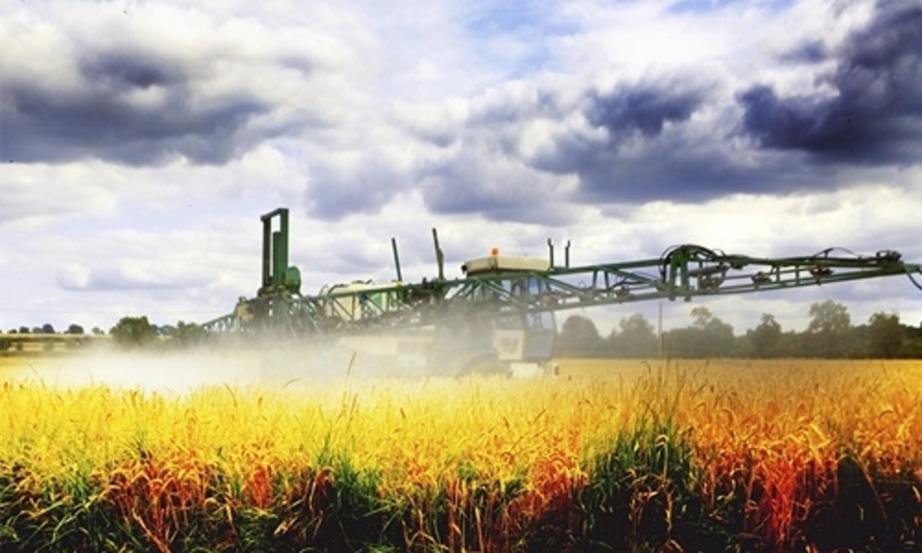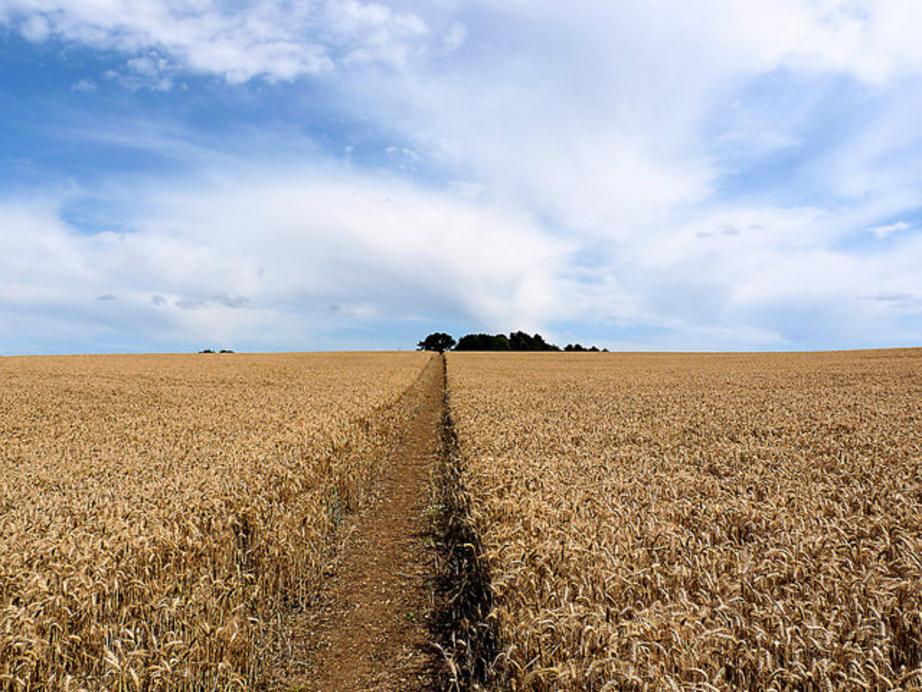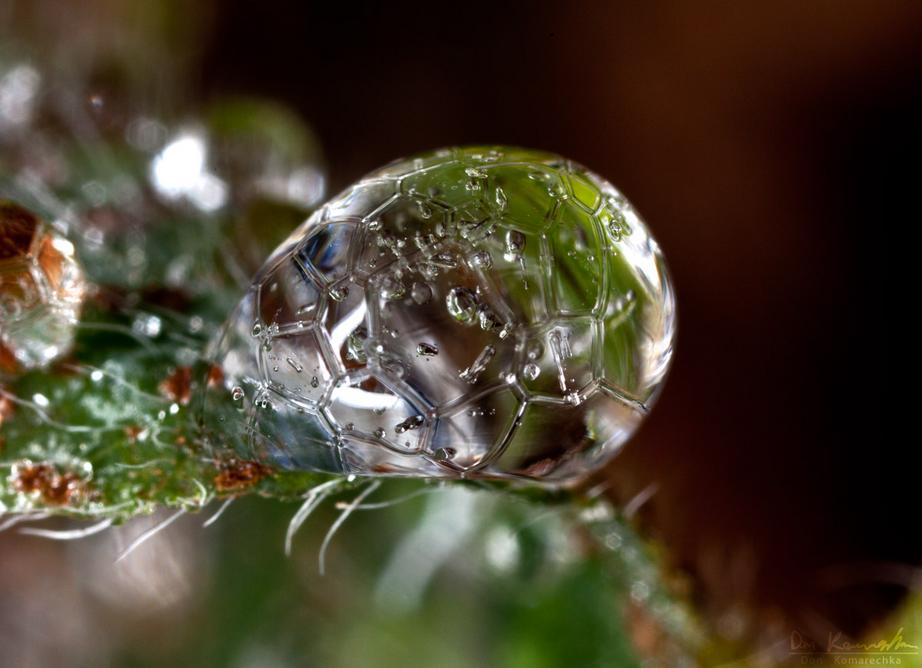Glyphosate used to kill and prepare crops for harvest
Cornucopia’s Take: Glyphosate is not allowed in organic agriculture, but it is widely used in conventional wheat, oats, and other crops to kill the crop at once for harvesting. This enables the crop to dry and be harvested efficiently at one time. It also adds a load of toxins to many conventional foods, without even a superficial wash by rain. Cornucopia does not suggest that every small conventional grain producer uses glyphosate as a desiccant, but this practice is well-known in the industry. Monsanto reps offer specs for a mix of glyphosate to be used for this purpose, and concerned livestock farmers seek feed not killed by glyphosate.
Why Is Glyphosate Sprayed on Crops Right Before Harvest?
Glyphosate, the main ingredient in Monsanto‘s Roundup herbicide, is recognized as the world’s most widely used weed killer. What is not so well known is that farmers also use glyphosate on crops such as wheat, oats, edible beans and other crops right before harvest, raising concerns that the herbicide could get into food products.
Escalating Use of Probable Carcinogen
Glyphosate has come under increased scrutiny in the past year. Last year the World Health Organization’s cancer group, the International Agency for Research on Cancer, classified it as a probable carcinogen. The state of California has also moved to classify the herbicide as a probable carcinogen. A growing body of research is documenting health concerns of glyphosate as an endocrine disruptor and that it kills beneficial gut bacteria, damages the DNA in human embryonic, placental and umbilical cord cells and is linked to birth defects and reproductive problems in laboratory animals.
What is not so well known is that farmers also use glyphosate on crops such as wheat, oats, edible beans and other crops right before harvest.

A recently published paper describes the escalating use of glyphosate: 18.9 billion pounds have been used globally since its introduction in 1974, making it the most widely and heavily applied weed-killer in the history of chemical agriculture. Significantly, 74 percent of all glyphosate sprayed on crops since the mid-1970s was applied in just the last 10 years, as cultivation of GMO corn and soybeans expanded in the U.S. and globally.
Glyphosate Used to Speed Up Wheat Harvest
Charles Benbrook, Ph.D., who published the paper on the mounting use of glyphosate, says the practice of spraying glyphosate on wheat prior to harvest, known as desiccating, began in Scotland in the 1980s.
“Farmers there often had trouble getting wheat and barley to dry evenly so they can start harvesting. So they came up with the idea to kill the crop (with glyphosate) one to two weeks before harvest to accelerate the drying down of the grain,” he said.
The pre-harvest use of glyphosate allows farmers to harvest crops as much as two weeks earlier than they normally would, an advantage in northern, colder regions.
The practice spread to wheat-growing areas of North America such as the upper Midwestern U.S. and Canadian provinces such as Saskatchewan and Manitoba.
“Desiccation is done primarily in years where conditions are wet and the crop is slow to dry down,” Joel Ransom, an agronomist at North Dakota State University, said.
Ransom says desiccating wheat with glyphosate has been a useful tool for farmers.
“It does help hasten dry down and controls grain weeds and other material that slows down the threshing practice,” he said. “It has an important role in areas where it’s wet.”
Ransom says the practice has increased in North Dakota, which is the leading wheat-producing state in the U.S., over the past 15 years due to wetter weather.
While more common in Upper Midwestern states where there is more moisture, desiccation is less likely to be done in drier wheat growing areas of Kansas, Oklahoma, Washington and Oregon.
All Conventional Farmers in Saskatchewan Desiccate Wheat
According to a wheat farmer in Saskatchewan, desiccating wheat with glyphosate is commonplace in his region. “I think every non-organic farmer in Saskatchewan uses glyphosate on most of their wheat acres every year,” the farmer speaking on condition of anonymity said.
He has concerns about the practice. “I think farmers need to realize that all of the chemicals we use are ‘bad’ to some extent,” he said. “Monsanto has done such an effective job marketing glyphosate as ‘safe’ and ‘biodegradable’ that farmers here still believe this even though such claims are false.”
The vast majority of farmers in Manitoba, Canada’s third largest wheat producing province, also use glyphosate on wheat, said Gerald Wiebe, a farmer and agricultural consultant. “I would estimate that 90 to 95 percent of wheat acres in Manitoba are sprayed pre-harvest with glyphosate; the exception would be in dry areas of the province where moisture levels at harvest time are not an issue,” he said.
“Don’t Ask, Don’t Tell” Policy
According to Tom Ehrhardt, co-owner of Minnesota-based Albert Lea Seeds, sourcing grains not desiccated with glyphosate prior to harvest is a challenge.
“I have talked with millers of conventionally produced grain and they all agree it’s very difficult to source oats, wheat, flax and triticale, which have not been sprayed with glyphosate prior to harvest,” he said. “It’s a ‘don’t ask, don’t tell policy’ in the industry.”
 Hornbeam Arts
Hornbeam Arts
Ehrhardt also says that crops grown to produce seed are not usually sprayed with glyphosate prior to harvest because this can damage seed germination.
Grain Millers, which has grain processing facilities in the U.S. and Canada, announced last year that it would not buy oats from Canada that had been desiccated with glyphosate. The company’s Canadian procurement manager, Terry Tyson, told Western Producer that glyphosate disrupts the natural maturing process and starch development, resulting in lower quality flakes and flour. He said the decision had nothing to do with health or safety concerns.
“Would Rather Not Eat a Loaf of Bread With Glyphosate In It”
Still, there are obvious concerns about glyphosate getting into food products.
“We are told these (glyphosate residues) are too small to matter but can we believe that?” the Saskatchewan farmer asked. “I think everyone, even farmers that use and love glyphosate, would rather not eat a loaf of bread with glyphosate in it.”
Wiebe shares similar concerns. “Consumers don’t realize when they buy wheat products like flour, cookies and bread they are getting glyphosate residues in those products,” he said. “It’s barbaric to put glyphosate in food a few days before you harvest it.”
Wiebe believes the use of glyphosate on wheat may be connected to the rise in celiac disease. “We’ve seen an explosion of gluten intolerance,” he said. “What’s really going on?”
“Can you imagine the public’s response if they knew that glyphosate is being sprayed on the oats in their Cheerios only weeks before it is manufactured?” Ehrhardt asked.
Residues of glyphosate have been found in wheat flour. Last year, Ransom reported to the U.S. Wheat Quality Council that tests on flour samples from the U.S. and Canada found that all had traces of glyphosate. However, Ransom said these were well below the maximum residue limits for glyphosate in wheat, which are 30 parts per million in the U.S.
Still, Ransom said: “I wouldn’t be surprised if someone repeated the test and found traces also.”
In response to mounting concerns over the escalating use of glyphosate, the U.S. Food and Drug Administration recently said it would begin testing foods for glyphosate residues.
Powerful Effect on Food System
Along with wheat and oats, glyphosate is used to desiccate a wide range of other crops including lentils, peas, non-GMO soybeans, corn, flax, rye, triticale, buckwheat, millet, canola, sugar beets and potatoes. Sunflowers may also be treated pre-harvest with glyphosate, according to the National Sunflower Association.
Benbrook says that a large portion of edible beans grown in Washington and Idaho are desiccated with glyphosate.
There are no statistics kept on the number of acres of wheat or other crops that are desiccated with glyphosate, according to Ransom.
While the pre-harvest use of glyphosate may account for a small amount of overall use of the herbicide, Benbrook says this still has a huge impact. “It may be two percent of agriculture use, but well over 50 percent of dietary exposure,” he said.
Further, he said: “I don’t understand why Monsanto and the food industry don’t voluntarily end this practice. They know it contributes to high dietary exposure (of glyphosate).”
Wiebe sees the situation in dire terms. “The most tragic thing is that industry is encouraging the use of glyphosate on wheat, farmers are using it, consumers are unaware of it and it’s having a powerful effect on the food system,” he said.
For the rest of this article please go to source link below.

